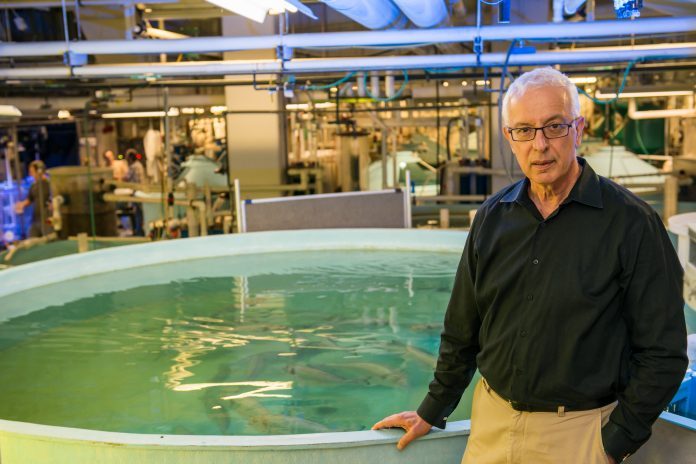Maryland Sea Grant and University of Maryland, Baltimore County, as well as land-based salmon farmers Nordic Aquafarms and Superior Fresh, to partner on “one of the nation’s most sophisticated aquaculture research operations”.
In a press release, Maryland Sea Grant writes that the USD 1.2 grant from the National Sea Grant Office, part of the National Oceanic and Atmospheric Administration, is one step of a major agency US effort to increase domestic aquaculture production and reduce the trade deficit associated with salmon imports.
Industry partners in the three-year project which kicks off in September, include Superior Fresh in Wisconsin and Whole Oceans, LLC, and Nordic Aquafarms in Maine.
Coordinated network
The funding will establish a coordinated network of recirculating aquaculture systems focused on raising Atlantic salmon in land-based systems that re-use the water to grow fish.
Yonathan Zohar, the chair of the UMBC Department of Marine Biotechnology and the grant’s lead principal investigator, said that the study: “offers an opportunity for domestic production of Atlantic salmon to replace all of these imports. The only way to really scale that up is with land-based systems that are environmentally sustainable. This allows us to identify the bottlenecks, address the issues and develop a strategic plan to make sure this emerging Atlantic salmon aquaculture industry in the US can be successful.”
Multi-disciplinary approach
Maryland Sea Grant Director Fredrika Moser said she saw tremendous value in a multi-disciplinary approach to growing domestic aquaculture through this grant.

“Sea Grant is excited to work with our partners in research and industry to develop a roadmap that will help policymakers and federal agencies promote an economically feasible and environmentally sustainable land-based domestic aquaculture industry,” she said.
Learning curve
“This research is critical in terms of promoting industrial development in the United States. It’s still a very young industry here. There’s a tremendous development potential as we see it,” said Nordic Aquafarms president Erik Heim. “There’s a learning curve in this industry. This kind of research can disseminate knowledge and lower the entry barriers for new players as well as help established players grow.”
Whole Oceans outreach and development associate Jennifer Fortier added: “We want to develop training programs that can help us recruit local workers and retrain skilled labourers from other industries. We look forward to collaborating with the other top-notch partners and learning from each other as we work to expand this industry.”
Superior Fresh Chief Science Officer Steven Summerfelt will chair the project’s Steering Committee, told SalmonBusiness: “This capacity-building grant will allow Superior Fresh – the first land-based producer of Atlantic salmon in the US – to work with other land-based salmon producers and researchers to identify the critical challenges currently limiting production of market-size Atlantic salmon within recirculating aquaculture systems.”
According to the agency, about 90 percent of all seafood consumed in the United States is imported. Only about half of the seafood consumed in the United States comes from aquaculture, which puts pressure on wild stocks. Those imports add to a growing seafood trade deficit, already at USD 16 billion in 2017. Americans consume 500,000 tons of Atlantic salmon annually, 95 percent of which is imported, and worth a value of USD 3.4 billion.


